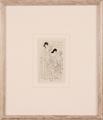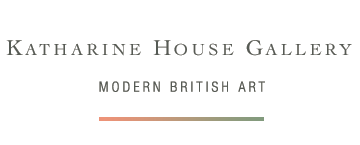Eric Gill (1882 - 1940)
Please click on the image for details and price.

Adam and Eve in Heaven. 1927

Eve.

Nature and Nakedness
signed wood engraving. 1930
Biography
Eric Gill was an English sculptor, letter-cutter, typographic designer, calligrapher, engraver, writer and teacher. After he married he began teaching writing and illumination at the Central School, and monumental masonry and lettering for masons. In 1907 Gill moved with his family to Ditchling in Sussex. At Ditchling Gill encouraged craftsmen to pursue their skills in wood-engraving, calligraphy, weaving, silverwork, stone-carving, carpentry, building and printing. In 1910 he began direct carving of stone figures. These included Madonna and Child (1910), which Fry described in 1911 as a depiction of ‘pathetic animalism'. Such semi-abstract sculptures showed Gill's appreciation of medieval ecclesiastical statuary, Egyptian, Greek and Indian sculpture, as well as the Post-Impressionism of Cézanne, van Gogh and Gauguin. His growing reputation, together with his conversion to Catholicism (1913), led to a commission from Westminster Cathedral for the Stations of the Cross. His Catholicism inspired other biblical works. His best-known commission on a secular subject was 'Prospero and Ariel' (1931) for the BBC at Broadcasting House, Langham Place, London.From 1924 to 1928 Gill and his wife sought to recreate the Ditchling community at Capel y Ffin, a deserted monastic building in the Black Mountains of Wales, though its impracticality and remoteness persuaded them to move nearer to London, to Pigotts, near High Wycombe where Gill worked on carvings, on the writing of pamphlets, essays and books, and on engravings.
Among his finest achievements are the engravings for the Golden Cockerel Press. Gill's highly original typeface designs had a lasting influence on 20th-century printing.


